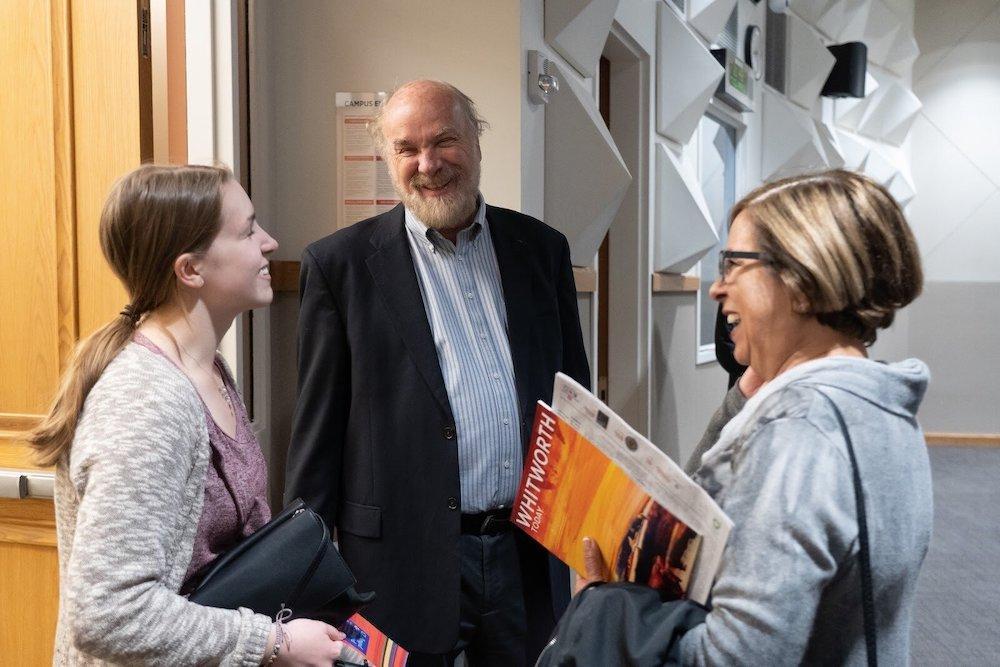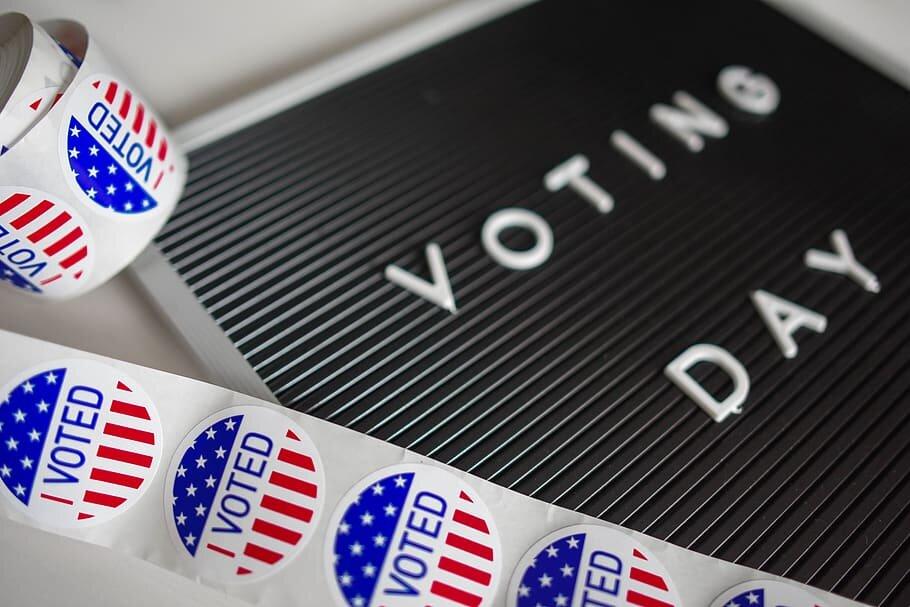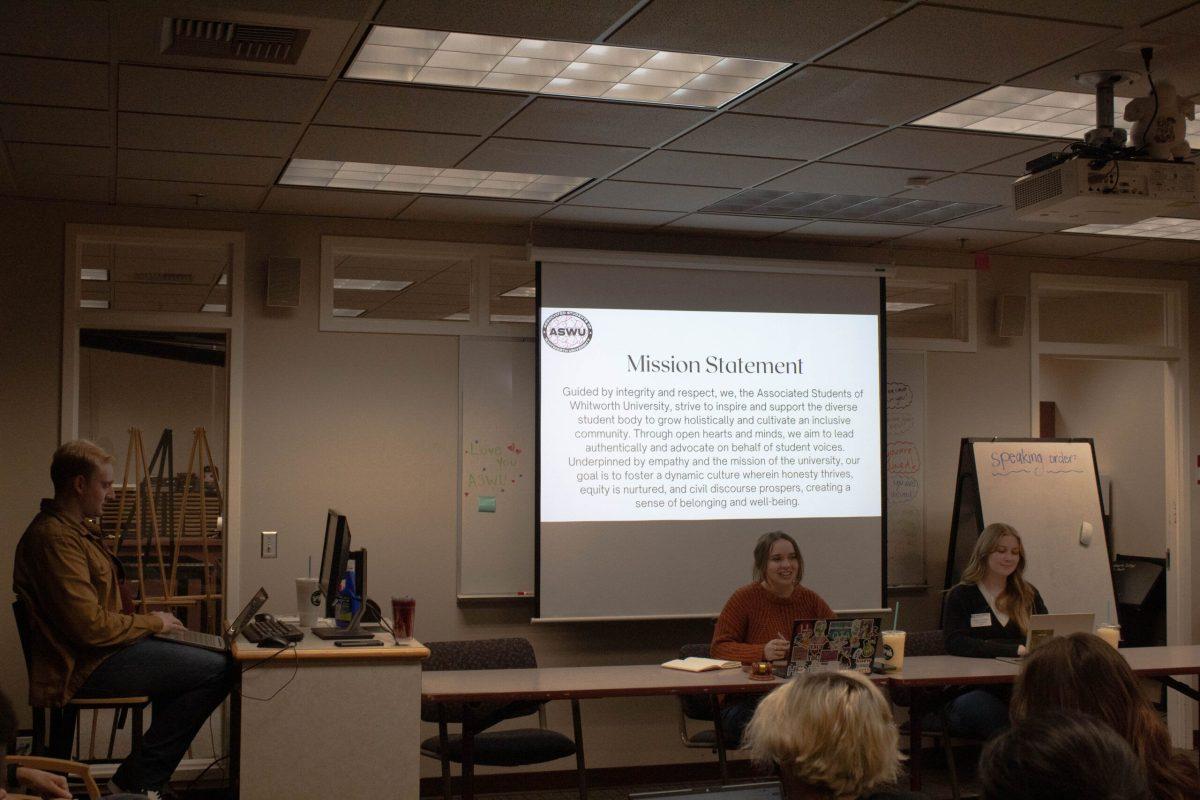I stared at the small plop of potatoes and four green beans on my plate, then back at the happily oblivious Sodexo server. A line was beginning to form behind me while I contemplated my options: I could either complain and ask for more food or, more unreasonably, starve myself to avoid confrontation. Of course, I chose the latter. A few hours later my hunger pangs increased, so I crawled out of bed and indignantly discovered that the food court was simply not open at 3 a.m.
There remains a certain irony in the fact that we students pay over two thousand dollars a year for the privilege of being slowly starved to death by Sodexo. Luckily, a solution exists in the form of late-night dining. For an additional $350 a year, Whitworth allows insufficiently fed students to be fed between the hours of 9 and 10:30 p.m., Monday-Thursday via daily leftovers. However, is this extra price tag really worth it?
My first semester at Whitworth, I did not have late-night dining included in my meal plan. This opened up several cans of worms. Primarily, I would forget to eat before 7, the time when the dining hall would decide that further feeding of two-thousand-dollar-per-semester-paying-students was beyond its pay grade. Other times, I would simply be too busy with schoolwork to eat before 7, at which time the dining hall would decide that further feeding of studious, two-thousand-dollar-per-semester-paying-students was beyond its pay grade. Furthermore, there were times when the main course was symbolically on par with a small plop of potatoes and four green beans per person—either that, or the main course was a more substantial plop of “food” on par with toothpaste mixed with glue. How you can possibly detect my bitterness through my repetitive sentences is beyond me—but I digress.
As they say, knowledge comes with time, and by my second semester, I found the problems I faced previously suddenly nonexistent. Older, wiser me had two new secret weapons. Quite simply, I had less drive for getting high grades, and diverted most of it into my car, available to transport me to more gourmet locations should Sodexo not satisfy my hunger. This combined wisdom of not studying as hard and spending most of my free time driving around enabled me to pamper my stomach more than I did before. Unfortunately, right before my enlightenment, I had changed my meal plan over winter break, including late-night dining to avoid malnutrition. Occasionally I would remember that I was now a paying member of the Late-Night Dining Club and slink over to eat all the leftover pot-stickers and pizza, but for the most part, McDonald’s was my new ride-or-die.
“But,” you protest, “you’ve simply been talking about your own experiences this whole time! What about others?” That is true. Late-night dining is a discussion for the community, and to prove my lack of bias against Sodexo for once feeding me uncooked fish, I’ve included a broad sample of one person. I asked Lukas Moua, a freshman majoring in Health Sciences, what he thought. Moua told me he currently doesn’t have late-night dining on his meal plan.
“People make it work by going to eat, but if I don’t have time to go at night then it’s basically a waste of money,” he said.
While our accounts differ in background, there is a commonality in that late-night dining doesn’t see much use from some people. Let’s do some quick math. If it costs $175 per semester then, giving a generous estimate of ten visits during that time, partaking of a selection of leftovers would cost $17.50 per visit. In order to get your money’s worth and pay a more reasonable $5 (still quite a lot for broke college students) per visit, you’d need to go to late-night every day for a little over a month, or about one-third of a semester. I don’t know about you, but that seems like an awful lot of commitment, which feels scary (I still have some growing up to do). In the end, I suppose late-night is a feature that would suit car-less night owls, but for the most part unless you go enough times, that money would be better-spent buying an overpriced Whitworth sweatshirt at the bookstore. At least that money would be going somewhere rather than being applied towards thin air (like my dollar that an Oliver vending machine ate the other day). If you are a trust-fund baby, this may not apply to you, but my verdict for those of us who aren’t is to save your bucks.








